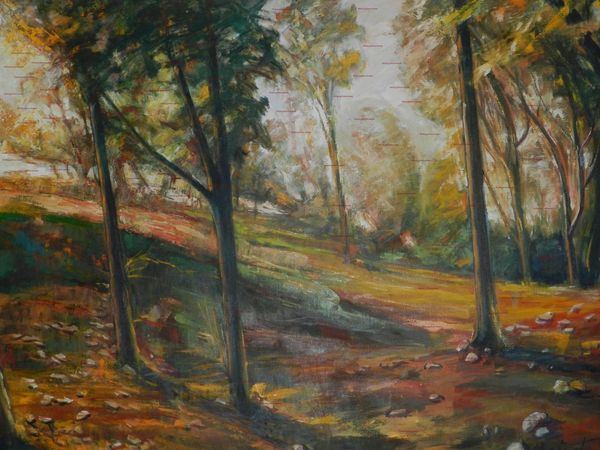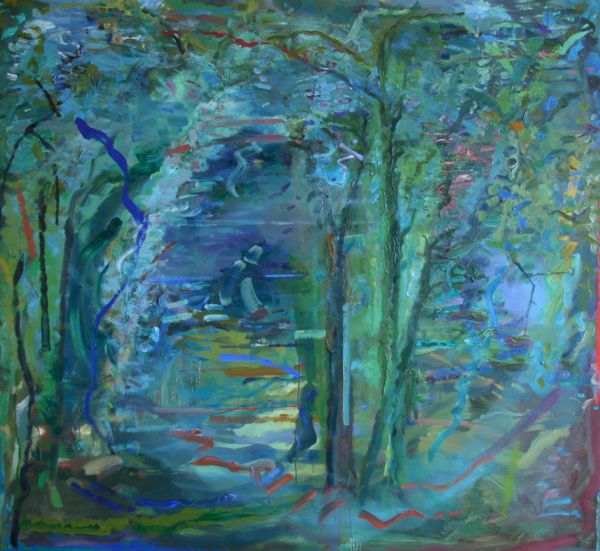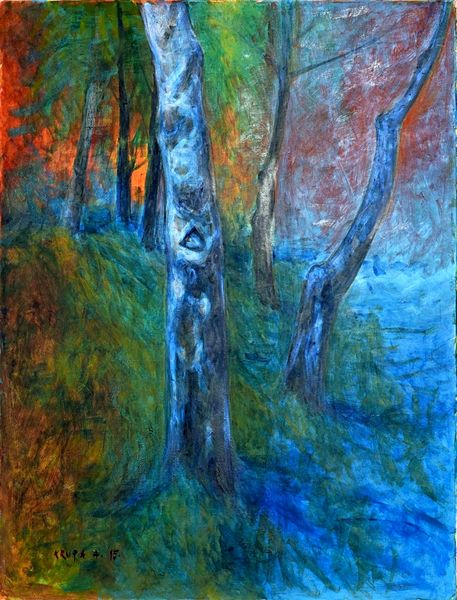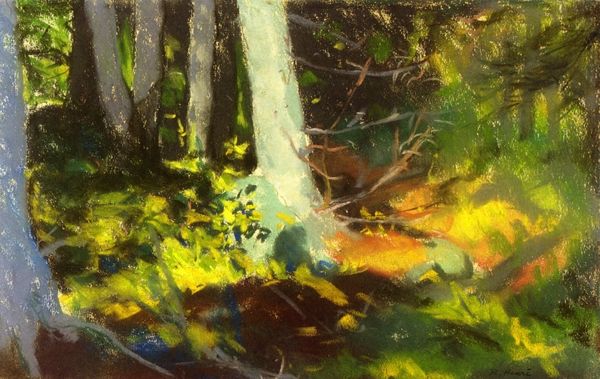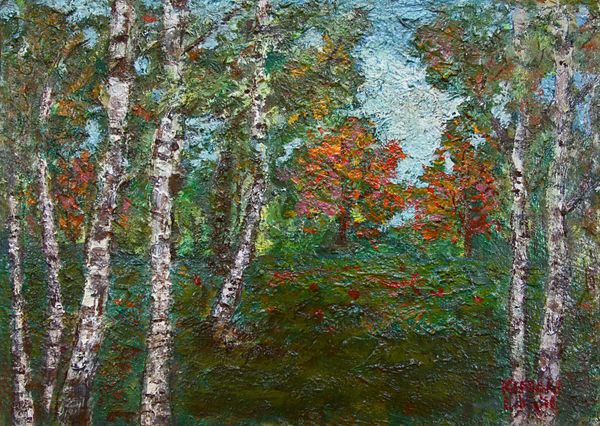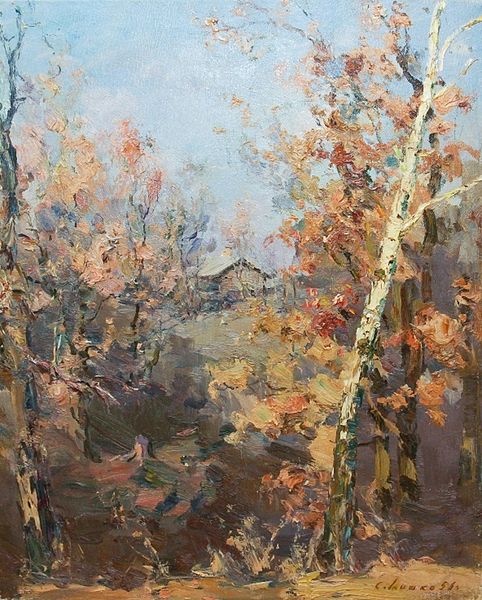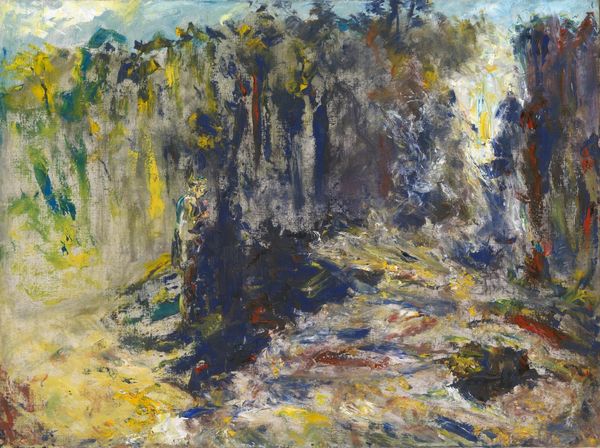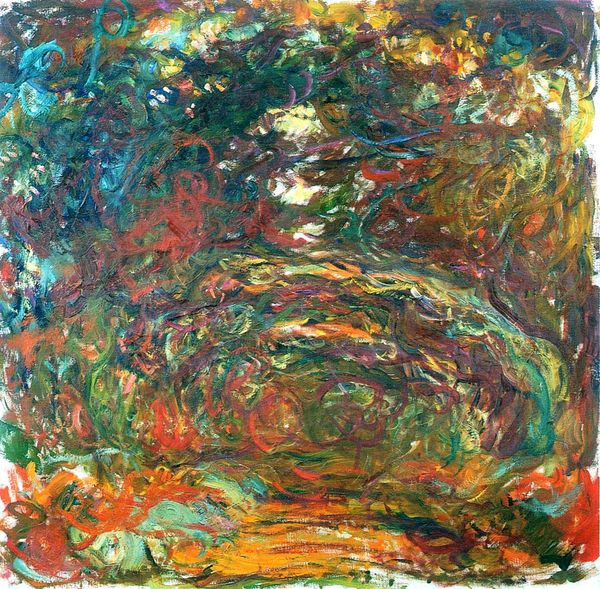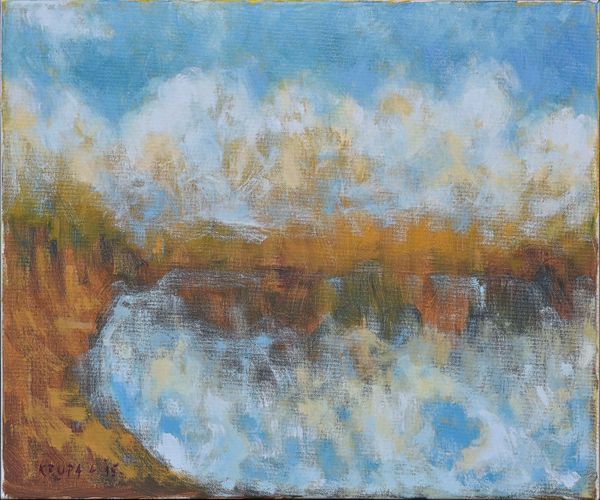
Dimensions: 120 x 120 cm
Copyright: Copyright: Gazmend Freitag
Editor: Gazmend Freitag's "Bachlberg," created in 2020 with acrylic paint, strikes me as a landscape imbued with a poignant sense of transience. What narrative threads do you see woven into this forest scene? Curator: This work certainly speaks to transience, but it also subtly engages with ideas of access and disruption within natural spaces. The fallen tree, while seemingly natural, also acts as a barrier, dictating pathways. How do you see that interplay impacting our reading of the "landscape" genre itself? Editor: That's fascinating; I hadn’t considered the barrier aspect so explicitly. I was more focused on the expressive brushstrokes conveying the ephemeral beauty of the autumn foliage, like a visual poem about the cycle of life and death. Curator: Absolutely. The expressiveness links it to certain histories within art, but consider also the context in which Freitag is creating. The intense colors, the thick application of paint – could these also be read as a commentary on environmental changes? An elegy perhaps? Is the overwhelming beauty also obscuring signs of distress? Editor: It makes me think about how landscape painting historically romanticized nature, often erasing the realities of environmental exploitation. Could Freitag be subverting that tradition? Curator: Precisely! And furthermore, who is the 'Bachlberg' for? Historically, these idealized landscapes served the elite. By layering an awareness of environmental crisis, is Freitag asking us to reconsider who has access to "nature" and at what cost? Editor: I hadn't thought about it that way, about the cost. Now I see a multi-layered commentary: beauty, decay, access, and environmental responsibility. Thanks for making me look deeper. Curator: And thank you for prompting this dialogue. It underscores how contemporary art can engage with tradition while challenging our assumptions about the natural world.
Comments
No comments
Be the first to comment and join the conversation on the ultimate creative platform.
